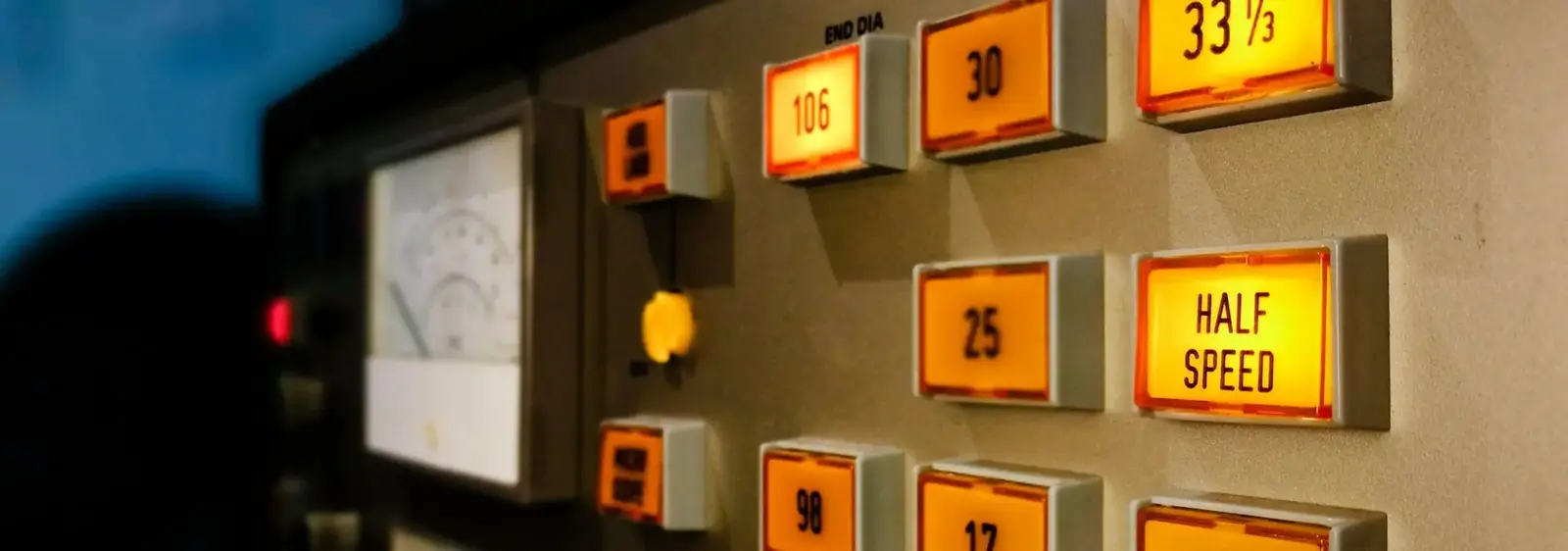 What is Half Speed Mastering?
What is Half Speed Mastering?
Half-speed mastering is a specialised vinyl record cutting technique used to heighten the sound quality of vinyl records, particularly for vinyl albums with intricate musical detail or dynamic shifts that challenge conventional mastering methods. In essence, half-speed mastering involves reducing the speed of both the playback source and the cutting head by half—meaning the source audio is played at 16 ⅔ RPM instead of the standard 33 ⅓ RPM when cutting a 33 ⅓ RPM record. This gives the cutting head on the lathe twice the amount of time to etch details onto the lacquer disc, leading to a theoretically more precise and accurate cut.
The Benefits of Half-Speed Mastering
One of the biggest advantages of half-speed mastering is the potential to capture finer details in high-frequency ranges, which are typically the most challenging to engrave at standard vinyl record speeds. When the cutting head moves more slowly, it can carve out intricate high-end frequencies more accurately, often resulting in enhanced clarity and depth. This process also allows for a wider frequency response, meaning listeners can experience subtleties that might be compressed or muddied in a typical vinyl mastering session.
Additionally, the slower cutting speed reduces the likelihood of distortion, especially for tracks with complex arrangements or pronounced highs, such as cymbals or strings. Because the cutting head is under less strain, it’s able to create smoother, cleaner vinyl grooves, yielding a playback experience that brings out the “sparkle” of detailed instrumentation. This improved clarity makes half-speed mastering an excellent choice for vinyl albums in which subtlety and nuance are vital to the listening experience.
A classic example of an album that benefited from half-speed mastering is The Beatles’ Sgt. Pepper’s Lonely Hearts Club Band, reissued by Parlophone in 2017. The album, which contains intricate psychedelic layers, orchestral components, and complex tonal shifts, saw a resurgence in sound quality through this technique, allowing listeners to hear details that may have previously been obscured or blended.
Limitations and Challenges
Despite its benefits, half-speed mastering is not universally applicable and comes with its own set of limitations. The slower speed, while helpful for high-frequency precision, may actually limit the ability to capture low-end sounds as robustly. Bass-heavy music or genres relying on deep, rhythmic grooves—such as certain electronic, hip-hop, or bass-centric rock albums—may lose some of the impact and warmth associated with full-spectrum cuts. In these cases, half-speed mastering could render a slightly thinner or less punchy sound.
Another potential drawback is that half-speed mastering has a tendency to reveal imperfections in the original recordings. While this added detail can be beneficial for high-quality recordings, it may inadvertently expose background noise, tape hiss, or any recording artefacts present in older masters. Consequently, this technique is typically reserved for vinyl masters that are already well-produced and do not contain such flaws, which limits its use to specific types of albums or music genres.
Moreover, half-speed mastering requires a high level of expertise from both the cutting engineer and the equipment being used. It’s a time-intensive process, and not all mastering studios are equipped to handle it, which also makes it more costly. This technique is generally performed in select studios, like Abbey Road Studios or Air Studios, both of which have established reputations for handling half-speed mastering with finesse.
Is Half-Speed Mastering Right for Every Album?
In summary, half-speed mastering is a powerful tool in the vinyl mastering world, yet it’s not a one-size-fits-all solution. The technique is most successful on albums with high-quality production, where high-frequency detail and clarity are central to the music’s essence. It’s particularly effective for genres like jazz, classical, or complex rock music that benefit from a precise, refined sound. Conversely, albums that rely on bass-heavy dynamics might lose some of their impact if mastered at half speed, and the heightened clarity may expose undesirable artefacts in less pristine recordings.
Ultimately, half-speed mastering remains a specialised option that can significantly enhance the listening experience for specific types of records. While it may not be the optimal choice for every album, when used appropriately, it can transform a well-produced recording into a remarkably detailed and immersive experience for vinyl enthusiasts and collectors alike.